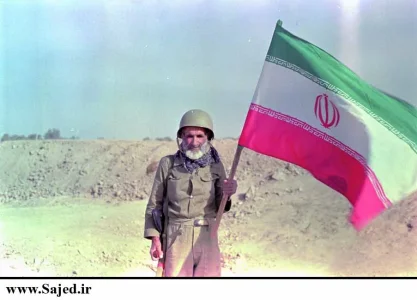- Joined
- Mar 28, 2017
- Messages
- 11,823
- Points
- 388
Taking cover behind their M4A3E8 Sherman tank escort, one man of this Ranger patrol of the 5th Regimental Combat Team, US 24th Infantry Division, uses his M1918A2 BAR to return the heavy Chinese Communist small arms and mortar fire which has them pinned down on the bank of the Han River. At left another soldier uses a field radio to report the situation to headquarters. 23 February 1951

(Source - NARA FILE#: 111-SC-358782)
(Colorised by Doug)
(Source - NARA FILE#: 111-SC-358782)
(Colorised by Doug)




